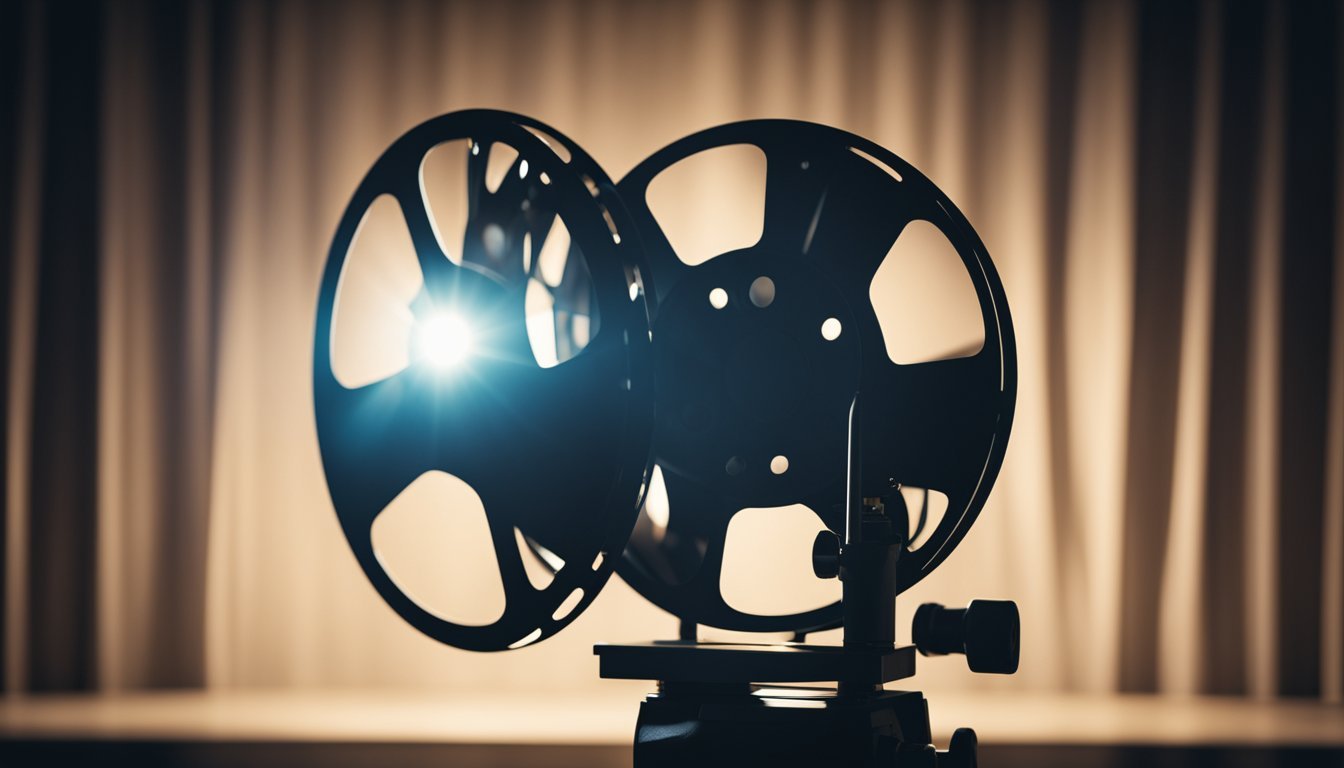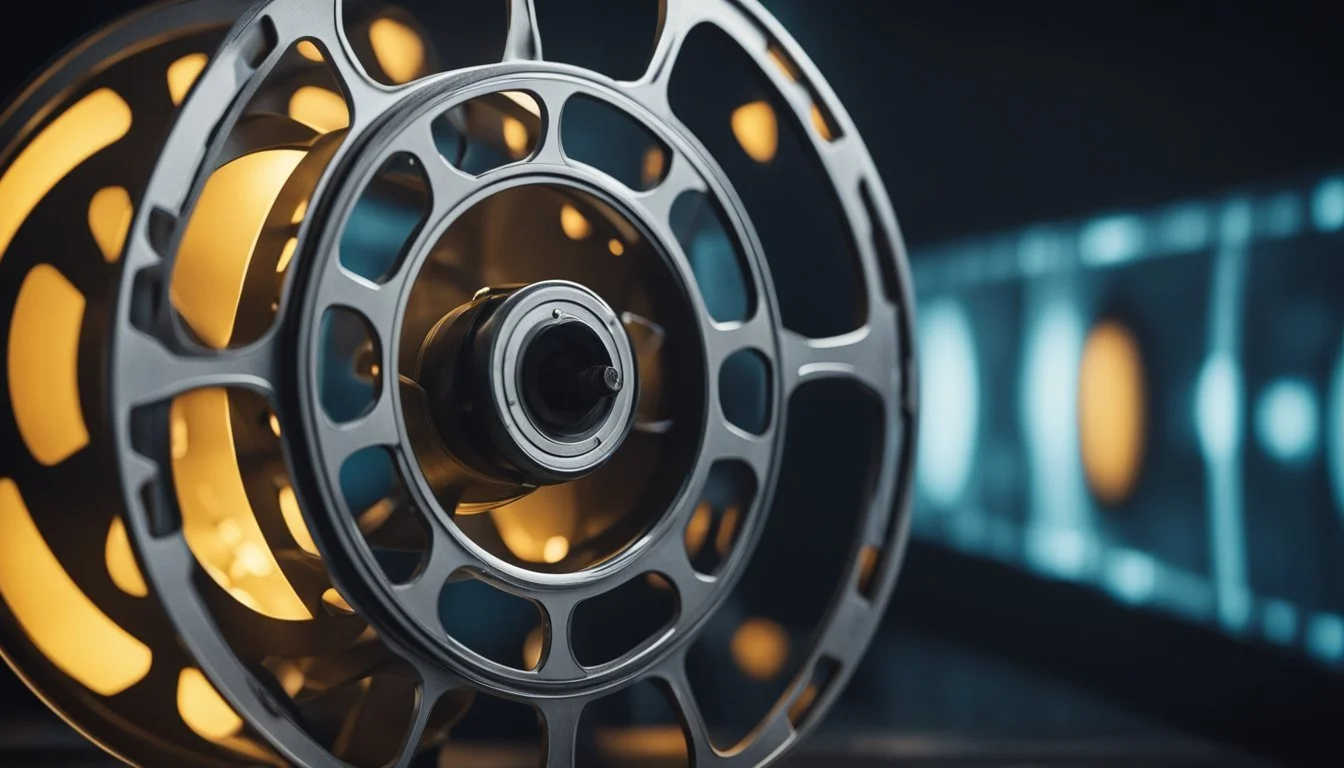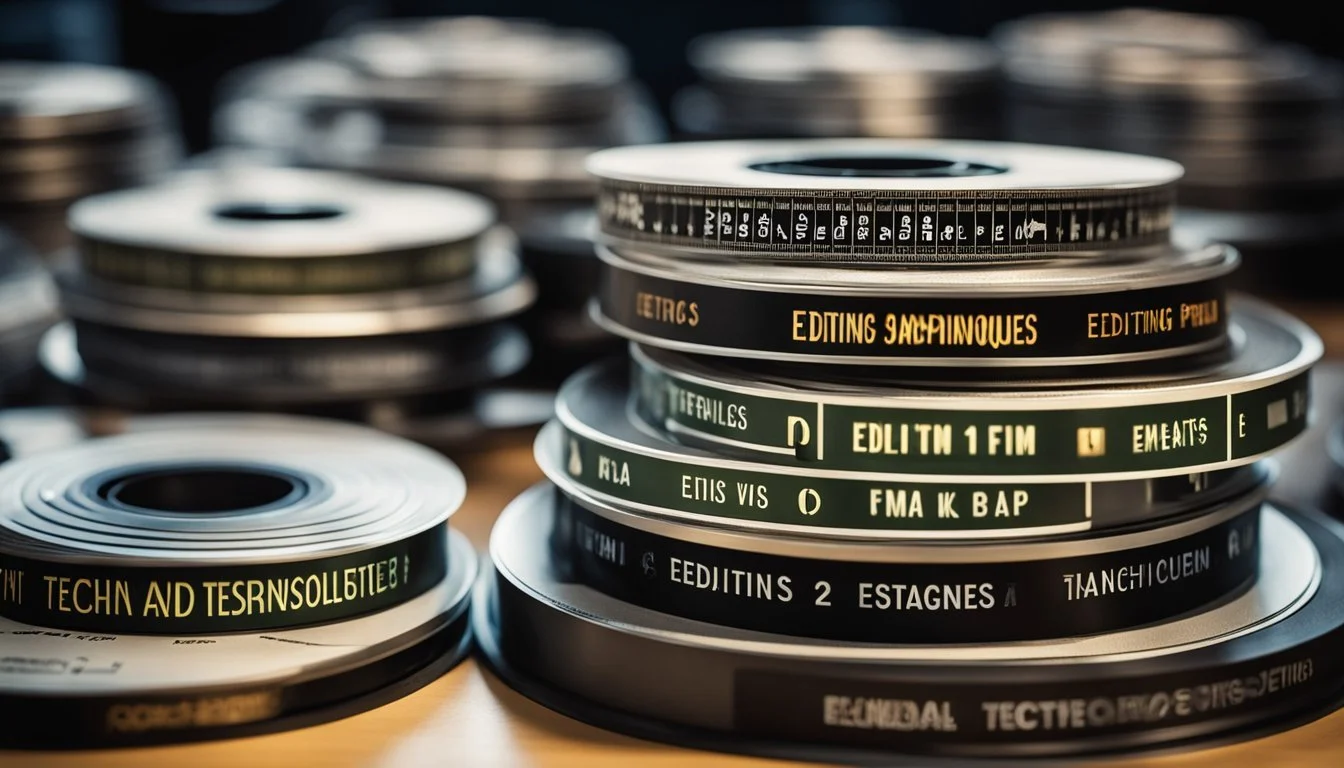Editing Techniques That Elevate Your Film's Impact
Essential Tips for Success
Editing techniques play a crucial role in transforming a film from ordinary to extraordinary. By mastering key editing skills such as cutting on action and scene transitions, filmmakers can ensure their storytelling remains seamless and engaging. Cutting from one shot to another while the subject is in motion maintains the flow and immerses the audience in the narrative.
Understanding the impact of each editorial choice is essential. Editors need to consider the psychology of their audience when making cuts. The right combination of shots, transitions, and effects can evoke specific emotions and drive the story forward in powerful ways.
Selecting the best shots and structuring them cohesively is where the real magic happens. By applying thoughtful edits, filmmakers are able to turn raw footage into a compelling narrative that resonates with viewers.
The Art of Storytelling in Film Editing
Film editing is central to shaping a narrative.
It involves selecting and arranging shots to form a coherent story. Editors choose the best takes, trim them, and sequence them to ensure the film flows smoothly.
Timing is critical. Precise cuts can heighten emotions, create suspense, or shift the audience's mood.
Transitions provide seamless scene changes. Editors use various techniques like fades, dissolves, and wipes to guide viewers through different parts of the story.
Matching action ensures continuity. Cuts that match movements between shots make the action appear fluid and believable.
Sound editing is as crucial as visual editing. It enhances the story by aligning dialogue, sound effects, and music with on-screen events.
Here are key elements every film editor considers:
Pacing: The rhythm at which scenes unfold.
Emotion: Creating the desired emotional response.
Juxtaposition: Placing contrasting scenes to highlight differences.
In collaboration with directors and other creatives, editors can transform raw footage into engaging narratives.
Editing is not just about technical skills. It requires a keen sense of storytelling. Editors must understand narrative structures and character arcs to effectively tell the story.
Ultimately, the art of storytelling in film editing lies in making invisible cuts that keep viewers immersed in the film.
Pacing and Rhythm
Editors craft the rhythm and pace of a film by manipulating the duration of shots, transitions, and moments of intensity to guide the audience’s emotional journey. These elements are essential for maintaining viewer engagement and enhancing the narrative impact.
Understanding Beats
Beats in film editing are pivotal moments that sync the story's flow and emotional shifts. Like musical beats, they establish the tempo, providing consistency and momentum.
Editors create beats through significant actions, dialogue exchanges, or visual changes. Properly placed beats can heighten tension, offer relief, or punctuate key moments. This strategic timing ensures that each scene resonates with the audience, keeping them invested in the story's progression.
Controlling Viewer Focus
Controlling viewer focus is a critical aspect of pacing and rhythm. Editors achieve this by selectively emphasizing specific visual or audio elements.
Shorter shots can increase intensity and urgency, while longer shots allow for absorption and reflection. Techniques such as close-ups, quick cuts, and focal transitions direct attention precisely where it's intended. By manipulating shot length and focus, editors steer the viewer's emotional and cognitive response, enhancing the storytelling experience.
Transition Techniques
Transition techniques link scenes smoothly, maintaining the film’s rhythm and continuity. Common transitions include cuts, fades, and dissolves.
Cuts provide an immediate shift, useful for dynamic changes or abrupt revelations. Fades offer a gentler, more contemplative shift, creating a sense of time passage or emotional transition. Dissolves blend scenes, often symbolizing a connection or transformation. Effective use of these techniques ensures that transitions support the narrative flow without jarring the audience, contributing to a seamless viewing experience.
Narrative Structures in Editing
Narrative structure in film editing dictates how a story is told. It influences the flow, pacing, and emotional impact of the film by organizing the sequences in various ways.
Linear and Non-Linear Editing
Linear editing follows a straightforward, chronological order. This approach is simple, easy to follow, and helps build suspense or tension naturally by progressing through a narrative timeline. It’s ideal for stories that benefit from a clear progression from beginning to end.
Non-linear editing allows scenes to jump back and forth in time. This can be used to create mystery, reveal backstory, or juxtapose different time periods for dramatic effect. Techniques such as flashbacks, flashforwards, and dream sequences are essential tools in non-linear editing.
Parallel Editing
Parallel editing, also known as cross-cutting, involves cutting back and forth between two or more scenes happening simultaneously but in different locations. This technique builds tension and draws connections between separate story threads.
By showing parallel actions, editors can emphasize the convergence of storylines or create suspense. For instance, a rescue mission and the impending danger both unfold at once, heightening the audience's emotional engagement and anticipation.
Montage Theory
Montage theory, developed by Soviet filmmakers like Sergei Eisenstein, involves piecing together a series of short shots to condense space, time, and information. Montages are powerful for illustrating a series of events, development of a character, or thematic elements.
Montages can convey complex ideas or emotional transitions efficiently. They often involve rapid pacing and symbolic visuals to communicate a lot in a short time. For instance, training montages in sports films depict the protagonist's improvement and dedication without lengthy exposition.
Overall, understanding and applying these narrative structures in editing can significantly enhance the storytelling and emotional impact of a film.
Color Correction and Grading
Color correction and grading are pivotal in enhancing the visual impact of any film. While color correction ensures visual consistency, color grading sets the mood and reinforces the narrative.
Setting the Mood with Color
Color grading allows filmmakers to evoke specific emotions and atmospheres. Using color wheels and grading tools, editors adjust shadows, mid-tones, and highlights. They can create a warm, nostalgic feel with orange and teal tones or a cold, desolate mood with blue hues.
This process goes beyond basic adjustments. It includes contrast, blackness depth, and white balancing. Each color choice directly affects the story, making scenes more dynamic and immersive. By manipulating color palettes, editors guide the audience's emotional responses.
Color Continuity
Color correction involves matching the color tones across all footage in a project. It ensures that hues and tones appear consistent, even when scenes are shot under varying lighting conditions. Tools like LUTs (Look-Up Tables) are crucial in this process. They help standardize colors, making them look uniform.
Maintaining color continuity prevents jarring visual shifts that can distract the viewer. It adjusts saturation, sharpness, and color overlays. This uniformity helps maintain the audience’s focus on the narrative, seamlessly transitioning between scenes. Thus, achieving a cohesive visual flow requires meticulous attention to detail in color correction.
Sound Design Integration
Sound design is crucial for enhancing the narrative of a film and immersing the audience in the cinematic experience. Effective integration requires attention to diegetic and non-diegetic sounds as well as sound bridges, which provide continuity between scenes.
Diegetic and Non-Diegetic Sounds
Diegetic sounds are those that originate within the film's world, such as dialogues, footsteps, or environmental noises. These sounds help ground the story in its setting and make it more believable. Filmmakers must ensure these sounds are balanced well with other auditory elements to avoid overpowering the scene.
In contrast, non-diegetic sounds include background music, voiceovers, or any audio not heard by the characters. These elements guide the audience's emotions and provide subtext. For instance, a suspenseful score can elevate the tension of a scene without being explicitly acknowledged by the characters.
Sound Bridges
A sound bridge links scenes together through audio, maintaining narrative flow and emotional continuity. By carrying sound from one scene over visual cuts, filmmakers can smooth transitions and maintain viewers' immersion.
Sound bridges can be used to foreshadow events or provide context. For example, the sound of an approaching storm might start before the visual scene changes, building anticipation or conveying urgency. This technique requires precise timing and careful mixing to ensure that the transition is seamless and contributes to the story effectively.
Visual Effects in Storytelling
Visual effects (VFX) are crucial in modern filmmaking. They not only create stunning visuals but also deepen the engagement by enhancing the narrative and bringing fantastical elements to life.
Enhancing Reality
Visual effects play a key role in adding depth to film narratives by making impossible scenarios believable.
For instance, VFX can be used to create realistic weather conditions, disaster scenes, or historical settings that would be too dangerous or costly to film practically.
By integrating digital elements seamlessly with live-action footage, filmmakers can create more immersive worlds.
This is especially important in genres like science fiction and fantasy, where the audience expects convincing, imaginary environments. Use of effects such as motion capture and green screen technology allows for remarkable creative freedom without sacrificing realism.
CGI vs. Practical Effects
Computer-Generated Imagery (CGI) and practical effects each have unique advantages.
CGI allows for the creation of highly detailed and dynamic scenes, such as alien landscapes or intricate creatures that wouldn't be possible with practical effects.
It also offers flexibility in post-production, enabling filmmakers to tweak and refine scenes.
Practical effects, on the other hand, bring a tangible quality to films. Examples include prosthetics, miniatures, and physical stunts. They often add a sense of authenticity that can be harder to achieve with CGI alone.
Balancing CGI with practical effects can result in a rich, believable visual experience, drawing on the strengths of both techniques to serve the story best.
The Role of Juxtaposition
Juxtaposition in film editing involves placing contrasting elements close together to highlight their differences. This technique can subvert expectations, create subtext, and evoke emotional responses.
Creating Subtext
Juxtaposition can subtly convey a deeper meaning by placing different images or scenes side by side.
For example, a shot of a luxurious dinner might be directly followed by a scene of someone begging for food. This creates a powerful contrast highlighting themes of disparity and inequality.
Use contrasting settings, character traits, or actions to build layers of meaning. A character might appear joyful in one frame and desolate in another, fostering audience empathy.
Filmmakers can employ this technique to underscore themes without overtly stating them, enriching the narrative depth.
Cultivating Emotional Response
Creating a powerful emotional response in film relies on effective use of music and specific editing techniques. These tools influence how audiences perceive and react to scenes, making them essential for telling compelling stories.
Music's Impact on Emotions
Music can profoundly shape a viewer's emotional experience. It can evoke emotions such as joy, sadness, tension, and excitement. Soundtracks and scores play a vital role in creating and enhancing the mood of a scene.
For example, a suspenseful scene with a slow, tense score can heighten anxiety, while a joyful scene with an upbeat, light-hearted tune can amplify happiness. Filmmakers often use leitmotifs—recurring musical themes associated with particular characters or situations—to reinforce narrative elements and emotional cues.
Moreover, the choice of instruments, tempo, and harmony can all sway an audience's emotions. Subtle changes in the music can signal shifts in tone, guiding viewers' emotional journeys through the film. Thus, thoughtful music selection and placement are crucial for impactful storytelling.
The Kuleshov Effect
The Kuleshov Effect is a film editing technique that demonstrates how audiences derive meaning from the juxtaposition of shots. This effect shows that viewers interpret emotions and narratives based on the sequences of images, regardless of the individual content of those images.
For instance, a neutral face followed by a shot of a delicious meal may make the character appear hungry or pleased, while the same face followed by a coffin might suggest mourning or solemnity. This editing technique relies on contextual cues to evoke specific emotional responses.
Filmmakers use the Kuleshov Effect to control audience perception and emotional involvement in the story. By carefully choosing which shots follow one another, they can create deeper connections and more nuanced emotions, enhancing the overall impact of the film.
Ethics and Responsibilities of Editing
Editors must navigate ethical challenges, ensuring the integrity and authenticity of the content, as well as cultural sensitivity in their work. Below are critical aspects to consider.
Misleading Editing
Misleading editing involves manipulating footage in ways that distort reality. Editors should avoid selective editing, where only parts supporting a particular narrative are shown. This practice can lead to misrepresentation, damaging trust and credibility.
Adding or removing key elements of a scene to change its context is unethical. Transparency is crucial; audiences should not be deceived into believing something that isn't true.
Maintaining the integrity of the original footage is essential. By resisting the urge to skew facts for dramatic effect, editors uphold the authenticity of the narrative and respect the audience's intelligence.
Cultural Sensitivity in Editing
Editors must be aware of cultural contexts and sensitivities when crafting their narratives. This involves understanding and respecting diverse cultures, traditions, and perspectives. Depicting cultures authentically and without bias is key.
Avoid stereotypes and clichés that can misrepresent or oversimplify a culture. Language use should be mindful of regional differences and nuances.
Consulting with cultural experts can be beneficial to ensure accuracy and respectfulness. An insensitive edit can alienate audiences and create significant backlash, so it’s vital to portray all cultures fairly and thoughtfully.





